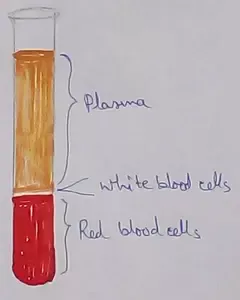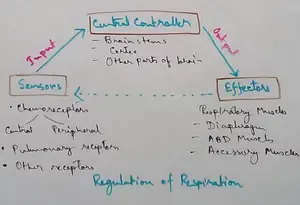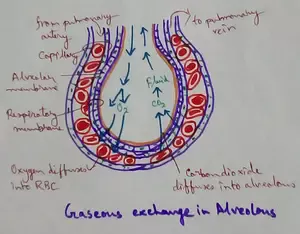Multiplicative Inverse
We know that when a fraction is multiplied by its reciprocal the result is always 1. This reciprocal is also known as multiplicative inverse. In order to find out the multiplicative inverse of a fraction the following points are to be kept in mind.
• In multiplicative inverse we are actually interchanging the numerator and denominator of a fraction if it is a proper or improper fraction.
[Note: in Proper fraction the numerator is less that its denominator and in improper fraction just the opposite that is the numerator is greater than its denominator]
• However, when we are finding the multiplicative inverse of a whole number we will have to first change the whole number into improper fraction by placing 1 in the denominator and will then interchange its numerator and denominator. Again in case of mixed fraction as well, we have to first change the mixed fraction into improper fraction and then we will interchange its numerator and denominator to get the multiplicative inverse of that fraction.
Hence, reciprocal is also termed as multiplicative inverse of that fraction.
There are few properties of multiplicative inverse which are discussed below:
- If we try to find out the multiplicative inverse of 1 it will be 1 only because if we place 1 in the denominator of 1 it will remain as 1. Interchanging the numerator and denominator will remain it as 1
- Multiplicative inverse of reciprocal of zero cannot be determined.
- The most interesting fact is that the multiplicative inverse of a proper fraction is improper fraction. As in proper fraction the numerator is less than the denominator but if we interchange the numerator and denominator then, the denominator will be less than the numerator hence will be converted into improper fraction.
Examples:
Find the multiplicative Inverse of the following proper fractions:
(i) \(\frac{3}{16}\)
(ii) \(\frac{9}{25}\)
(iii) \(\frac{23}{69}\)
(iv) \(\frac{7}{17}\)
Solution:
(i) \(\frac{16}{3}\)
(ii) \(\frac{25}{9}\)
(iii) \(\frac{69}{23}\)
(iv) \(\frac{17}{7}\)
- Another interesting fact is that the multiplicative inverse of an improper fraction is a proper fraction. As in improper fraction the numerator is greater than the denominator but if we interchange the numerator and denominator then, the denominator will be greater than the numerator hence will be converted into proper fraction.
Examples:
Find the multiplicative Inverse of the following improper fractions:
(i) \(\frac{19}{15}\)
(ii) \(\frac{87}{29}\)
(iii) \(\frac{83}{23}\)
(iv) \(\frac{73}{67}\)
Solution:
(i) \(\frac{15}{19}\)
(ii) \(\frac{29}{87}\)
(iii) \(\frac{23}{83}\)
(iv) \(\frac{67}{73}\)
- In multiplicative inverse of a whole number the numerator is always 1 because a whole number is changed into fraction by placing 1 in the denominator. Then when numerator and denominator is interchanged then 1 comes in the numerator. Hence in the multiplicative inverse of a whole number the numerator is always 1.
Examples:
Find the multiplicative Inverse of the following whole numbers:
(i) 48
(ii) 75
(iii) 15
(iv) 28
Solution:
(i) \(\frac{1}{48}\)
(ii) \(\frac{1}{75}\)
(iii) \(\frac{1}{15}\)
(iv) \(\frac{1}{28}\)
Hence these are the properties and facts about multiplicative inverse of whole number, mixed fraction, proper and improper fractions
From Multiplicative Inverse to HOME PAGE
Recent Articles
-
What Is Plasma? | Blood Plasma | Proteins | Nutrients | Cholesterol
Nov 07, 25 10:29 AM
Blood is a mobile fluid which is a connective tissue and is derived from the mesoderm like cell any other connective tissue. Colour of blood is reddish and that flows inside the blood vessels by means… -
Disorders of Respiratory System | Tuberculosis | Pleurisy | Emphysema
Oct 28, 25 11:39 PM
Tuberculosis is very common disease and is caused by a type of bacteria called Mycobacterium tuberculosis. This disease causes different trouble in the respiration and infection of several parts of th… -
Regulation of Respiration | Respiratory Centres | Inspiratory Area |
Oct 14, 25 12:13 AM
Respiratory Centre is the area that controls the rate of respiration and it is observed to be located in medulla oblongata and pons. Respiratory Centre has the following will dispersed components like… -
Explain Transport of Gases | External Respiration | Tissue Respiration
Oct 09, 25 11:35 PM
In humans gaseous exchange is completed in the following ways the steps are - External Respiration or Breathing - Breathing in false taking in of Oxygen and giving out of carbon dioxide in the body. M… -
Kind and Number of Teeth | Location of Teeth in Mouth | Care of Teeth
Sep 11, 25 12:52 AM
Kind and Number of Teeth





New! Comments
Have your say about what you just read! Leave me a comment in the box below.